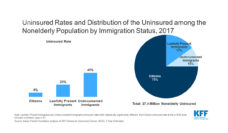Cities and counties play a central role in setting the tone for immigrant integration and receptivity, despite changing discourses on immigration at the state and federal level. Amid the broader context of immigration federalism and debates over immigration policy at the national level, local places in recent years have been pursuing their own paths on local immigration policy. Such subnational initiatives have led to warmer receptivity (welcoming) in some places and cooler receptivity (unwelcoming) in others for immigrant communities.
One initiative that embodies warmer receptivity is the welcoming cities movement, which consists of a growing network of municipalities across the United States and in other countries encouraging efforts for more efficient immigrant integration. Welcoming cities are implementing a comprehensive approach to immigrant integration, focusing not only on many aspects of strategies aimed at increasing the efficiency of immigrant integration but also on cultivating a more warmly receptive context among the receiving community. Indeed, welcoming cities often craft initiatives in a way that go beyond focusing solely on receptivity toward immigrants. They often also focus on improving receptivity for many points of intersecting identities, including race and ethnicity, sexual orientation, sex, gender identity and expression, national origin, religious affiliation, disability status, age, health equity, among others.
Drawing on a qualitative, community-based participatory research methodology, including interviews, focus groups, and participant observation, we specifically examined cities that have formally identified themselves as “welcoming cities” and are part of Welcoming America’s Welcoming Cities and Counties Initiative. In 2013, Welcoming America, a global nonprofit based in metropolitan Atlanta, Georgia, launched the initiative to help local governments and nonprofit organizations build a welcoming infrastructure across the United States. Over 100 municipalities across the U.S. are now members of the network, representing over 10% of the total US population.
The welcoming movement for immigrant integration and receptivity recognizes that promoting immigrant inclusion and health equity go hand-in-hand for cultivating a healthier community for everyone.
Our work in the welcoming cities of Dayton, Chicago, and Nashville, as well as more recent work in Atlanta (1, 2, 3) as co-founders of the Georgia Immigration Research Network, reveals that there are multiple forces at work that do not always align with the integration policies and initiatives conceived and carried out at the local, state, and federal levels—multiscalar forces. Second, the formation and change of such local receptivity and integration policies are deeply entrenched in the multisectoral changes of local communities, while transforming the immigration discourse at multiple geographic scales and the broader socioeconomic lives of these communities themselves. Third, various entities from different sectors and scales are involved in the welcoming cities formation process in ways that both help and hinder the process.
Other research has linked immigration policy, including immigrant integration initiatives, with public health outcomes. As a comprehensive approach to immigrant integration and receptivity, welcoming cities often include within their plans a component of actions and indicators related to public health and health equity. In particular, Welcoming America’s “Welcoming Standard” framework, which is used to assess indicators and impacts of individual welcoming cities, includes seven broad theme requirements. These in turn include certain indicators related to influencing health outcomes. (The seven requirement themes include government leadership, equitable access, civic engagement, connected communities, education, economic development, and safe communities). The equitable access” theme includes the requirement of “a partnership program(s) is in place to achieve equitable access to health services for immigrants” with two indicator examples: “the partnership program(s) provides information on health insurance options and promotes access to health insurance” and “the partnership program(s) promotes access to health services including treatment, testing, preventive health services, and mental health services.”
Similarly, Welcoming America’s One Region Initiative Plan (based on a pilot program to cultivate regional welcoming within the Atlanta metropolitan region. Note, we served on the steering committee for this pilot program, documenting our perspective on the process and practice through a participant observation methodology), includes indicators to address public health and health equity. These include, “publicly support health care options, health care partnerships for reduced cost, and health care advocacy to ensure equitable access” as one component for ensuring “community services and opportunities are available to all residents, including immigrants.”
The welcoming movement for immigrant integration and receptivity recognizes that promoting immigrant inclusion and health equity go hand-in-hand for cultivating a healthier community for everyone. Further, evaluating the impact of welcoming city initiatives—which include components of promoting health equity—on public and community health indicators and outcomes will help to strengthen processes and practices of immigrant integration and receptivity in cities and metropolitan regions.
Photo by Joey Csunyo on Unsplash















